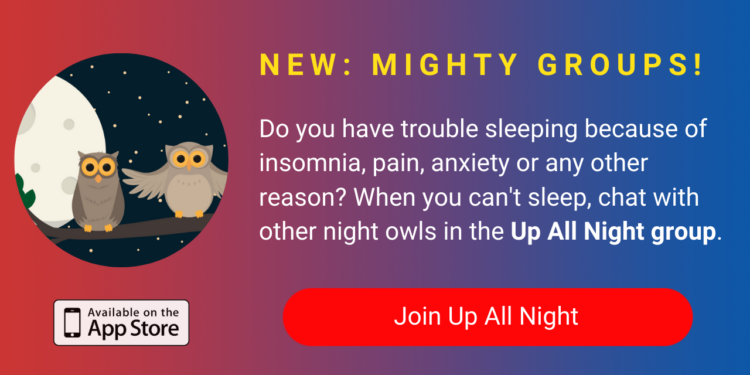I am never not thinking. My thoughts engage in constant chatter from the moment I wake up to the moment pure exhaustion allows me to lull into brief periods of sleep. From an outsider’s eyes, I am still. I am staring deeply at the floor or a number on the clock. I look empty. The marathon in my mind runs without spectators. On a good day.
There are days when my thoughts are like fully charged bulls just waiting for me to lift the gate. It could be the smallest diversion from my routine, a misplaced assumption, or a confirmation of fear that breaks the gates. The bulls become tears in my eyes and lumps in my throat. They weigh on my chest, compressing my lungs as I yell out. I am inconsolable. Well-meaning words of comfort are blocked by an impenetrable shield constructed by the characters in the stories I tell myself. It is up to me to quiet everything back to troubling but contained banter. When the storm passes I am left with the fear of what comes next.
I am one of millions of people who struggle with generalized anxiety disorder (GAD). When I was first diagnosed with GAD along with obsessive-compulsive disorder (OCD) as a teenager, I found myself able to accept the diagnosis but not the treatment. I had spent my childhood curled up on bathroom floors with debilitating stomach aches. I spent hours catching my breath convinced I was developing asthma. The diagnoses made sense, but the prospect of getting better seemed like a dangerous betrayal. My worries, like my compulsions, were what kept me safe. If I could pinpoint every bad outcome, I could avoid it. I refused to get better because like many with GAD, anxiety is a safety net.
Anxiety is the most uncomfortable safe space, and I lived in it for years. Eventually you burrow yourself so deep in anxiety’s arms, the rest of the world falls away. You become trapped in one place, one routine and one mindset. You become convinced that the way you are is the only way you will ever be. The assumption of others that GAD is a mild condition is false and insulting. Anxiety consumes you to the point that your mind is no longer your own. You are wrapped in the reigns of your worry and a puppet that carries out its commands. GAD destroys relationships and leads to catastrophic damage in every part of your professional and personal life.
At the point I accepted treatment for my GAD, I had burned more bridges than I can count. I had stopped showing up to school and work. I spent hours under blankets sobbing about fears that had yet to occur. I quit swimming despite still being in love with the water and gave up every single thing I enjoy to make room for the worries that continued to grow.
My turning point was not even my own. My mother had to force me into treatment, and I was so scared. I spent a year in a residential program engaging in cognitive behavioral therapy, exposure response prevention and dialectical behavioral therapy. Things got worse before they got better. I had near constant breakdowns for months until my fears never came to fruition despite me letting down my guard.
I have been doing work on my anxiety for over a decade now. I’d love to tell you I am cured, but that’s not how GAD works. GAD is chronic, but living with it can become manageable. I keep my worries swept into the background, but I can still hear their whispers. Thoughts come up every day that give me pause, and I still struggle with uncertainty. I can function though. I can put my thoughts on half-mute while I power through my responsibilities, and I can have fun with friends while leaving my anxiety tied up in the trunk. I am no longer a captive of my anxiety, but we still walk along the same path, just inches apart.
I accepted that my worrying is to be managed, not stopped, a long time ago. Telling someone with anxiety not to worry is like telling a dog not to bark at strangers. It’s not effective.
I am not the voice of every person with GAD, but I can offer my perspective. If someone you know has GAD — placing blame on them will usually exacerbate whatever problem their mind has cooked up. Some common examples of placing blame are: telling someone not to worry, that their worries are irrational or that they’re just looking for things to be worried about. My mother, the light of my life and a champion of educating herself on my conditions, does an incredible job of steering me towards objectivity through challenging the thoughts, rather than me. Some things she will ask include: How likely is that event to happen? What are alternate conclusions I could come to? Or in moments where I am so far gone I cannot answer these questions, she offers me compassion and sometimes a distraction. She breathes with me, talks with me and rides out the wave with me.
I don’t always have my mother though. If I’m in class, or at work or even just alone in the middle of the night, it is up to me to pull myself through. I have taught myself to check facts in my head, and until I’m ready to do that I engage in self-soothing behaviors. I have mastered breathing techniques that feel natural to me, I have fidget toys for my hands, essential oils to smell and a specific playlist for when things are too much. I engage with my senses as much as I can to pull myself out of my head.
Living with GAD isn’t easy. It’s something I fight every day, but it is no longer the thing that defines my days. It is my hope that people can educate themselves on the realities of anxiety to help themselves and others. GAD is not a mild condition and managing it takes work; but like everything, it is possible.
Getty image by nadia_bormotova


